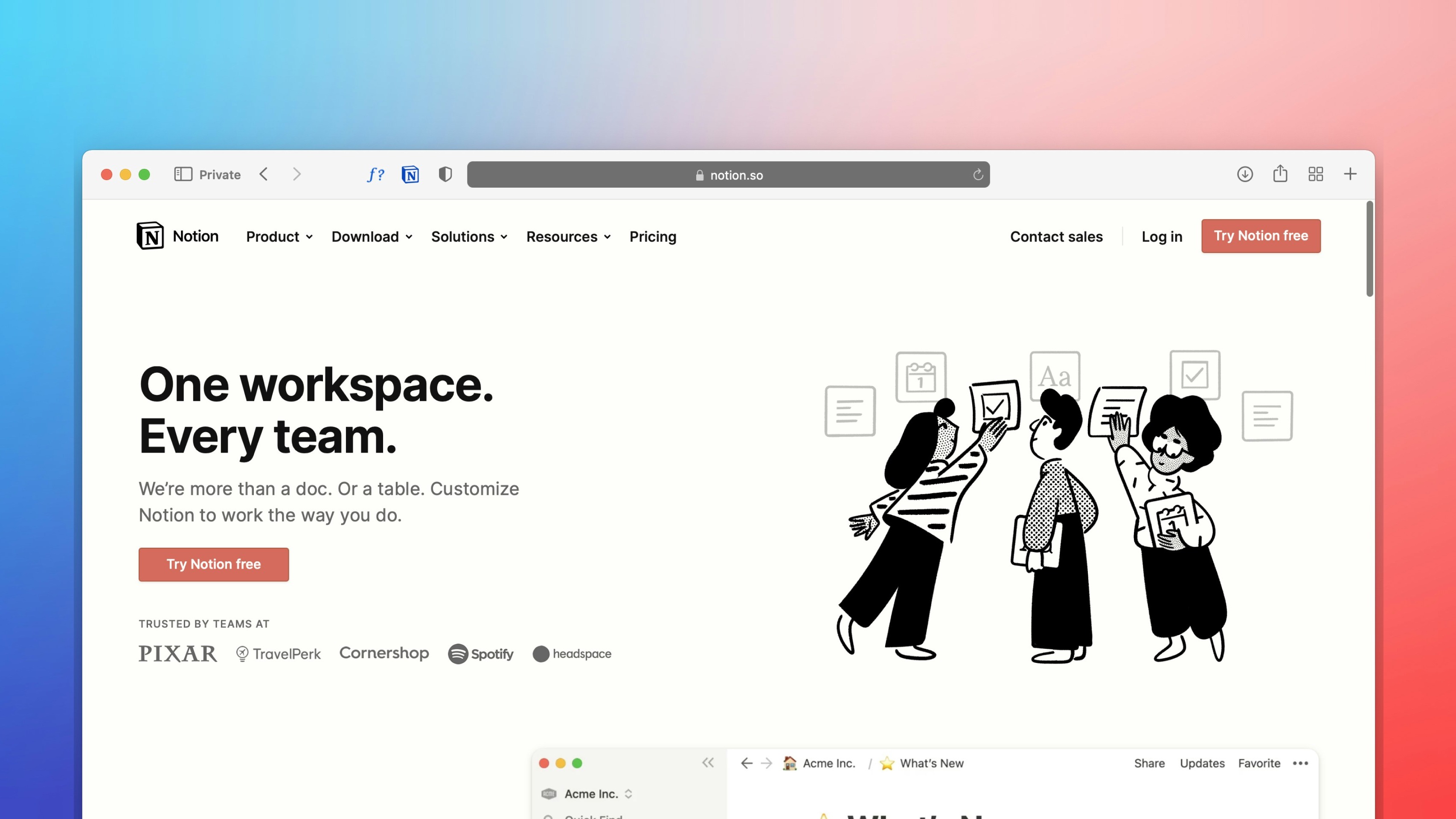 Freelancer tips
Freelancer tips Notion: What It Is, What It’s For, and How to Use It in Your Daily Life
Want to better organize your life and work? Notion can help boost your productivity. Click here to discover what this software is and what it’s used for.



As a freelancer, you have hundreds of ways to stand out among other independents. One way is by leveraging valuable tools like the pictogram.
What is a pictogram? Simply put, a pictogram is a type of language that does not need text or explanations to be understood. But if you want a more complete definition and to know how to create one, keep reading.
It is defined as a graphic symbol that allows the visualization of an object, concept, or idea in a simple representation.
A pictogram is designed to facilitate the understanding of a message quickly and effectively. It uses elements such as images, symbols, or icons, which present the information on a topic in a simple way.
Therefore, it can be used as a complement to infographics, as they simplify complex data. In addition, they make the information more accessible and visually attractive.
The importance of pictograms in presentations lies in their ability to communicate data effectively and memorably.
By incorporating pictograms into them, you capture the audience's attention, thus facilitating the understanding of the information and reinforcing the main message. As a result, clients may retain the content presented better.
Not to mention, they contribute to the visual coherence of the presentations through attractive design. This effectively improves the viewer's experience as well as the effectiveness of communication.
Pictograms can provide great advantages in different work environments. In this case, as freelancers, they benefit from their use in various ways:
Differentiation. Creative use of pictograms can help make your work stand out in a competitive market by adding a distinctive touch to your proposals, presentations, or promotional material.
Visual Appeal. As mentioned, the information appears visually more appealing to consume, increasing viewer engagement and improving message retention.
Versatility. You can leverage pictograms in a variety of materials besides presentations, such as on your website, resume, or even your social media profile.
Efficiency in Communication. Complex concepts or dense data are easier to understand in a pictogram, which your clients will appreciate, saving both your time and theirs.
Facilitates Internationalization. It is a tool that can be understood regardless of language, making it ideal if you work on multicultural projects or with international clients.
You cannot overlook these advantages. On the contrary, you should consider them when presenting relevant information to your clients.
You can use pictograms in a variety of situations. For example, they are key elements in creating mind maps, not only to represent ideas in a visual format but also to organize information in a structured way.
They can be used in the following contexts:
In the representation of data and statistics.
To make complex processes simpler.
To explain technical ideas or concepts.
To highlight key elements in a presentation.
Additionally, they can be integrated into a Venn diagram to highlight the similarities and differences between various concepts or categories.
If you want to fully leverage the potential of pictograms in your freelance work, consider the following tips:
Choose those that are globally recognized. This way, you can ensure clear communication with your audience and avoid possible confusion.
Select clear and well-defined pictograms for easy understanding. Try not to be ambiguous and choose symbols that convey the message as it is.
Adjust the size of the pictogram so that it is easily visible and integrates harmoniously into your presentation.
Use a color palette that highlights the design but also aligns with your brand's coherence to keep your clientele focused on the main content of your presentation.
Avoid saturating your presentation with too many pictographic signs, as this can divert attention from the central message and cause confusion. Opt for clarity and simplicity when selecting your visual elements.
By putting these tips into practice, you will convey your ideas and messages in a creative, clear, and memorable way.
Rapid and effective communication is essential in your freelance work. And these small graphic symbols can help you simplify complex concepts, among other things, so you should learn how to make them.
The good news is that you can create them by following these general steps:
The first and most important thing is to have a clear message that you want to convey with the pictogram. In addition to guiding you in the design process, this ensures that the result is effective in communicating the desired information.
The next step would be to brainstorm to compile different concepts and design options for the pictogram. It's also a good idea to look for visual references and examples that can inspire and guide you during the creation process.
Once you have a clear idea of the design, choose or create the necessary symbols to represent the message. You can draw them from scratch or use those available on the internet to adapt the appropriate symbols. Miro, for example, gives you access to IconFinder, which has a library of symbols.
With the selected symbols, you can start to develop the pictogram itself. Remember to focus on simplicity, legibility, and clarity of design so that your clients can easily understand the purpose. Additionally, you can adjust it to suit different types of people to ensure this.
If you need to make modifications, do so to refine the design and optimize its communicative effectiveness.
After creating the pictogram, test it with the intended audience. This will determine how effective the design was and whether the clients grasped the message.
Based on the feedback received, you can make the necessary adjustments to improve it before its final implementation.
Keep in mind that, like many visual representation schemes, there are many ways to create a pictogram. For this reason, we recommend adopting a personal style that suits the use you will give it.
Pictograms can be classified into various types, depending on their function and purpose.
Some types of pictograms include:
Informative Pictograms. Convey specific details, from icons in digital interfaces to typical traffic signs.
Warning Pictograms. Alert about potential risks. You will see them on chemical product labels or safety signage.
Prohibition Pictograms. Indicate not allowed actions. Generally, they are designed with red circles and a diagonal line over an object.
Directional Pictograms. Made to guide, like those found in public transportation systems.
Educational Pictograms. Represent specific concepts or topics, for example, an apple for a lesson on nutrition.
These types of pictograms are essential for various areas, from public safety to digital interface design. Using them appropriately contributes to the clarity and effectiveness of visual communication in a wide range of contexts.
Platforms like Canva provide attractive and easy-to-remember templates designed by professionals.
If you work with international clients, pictograms will be very useful. In any case, you have DolarApp as your ally for conducting international online transfers.
1. Hazard pictograms.

2. Prohibition pictograms.

3. Warning pictograms.


5. Orientation pictograms.


The world has borders. Your finances don’t have to.
 Freelancer tips
Freelancer tips Want to better organize your life and work? Notion can help boost your productivity. Click here to discover what this software is and what it’s used for.

 Freelancer tips
Freelancer tips Project chaos? Learn how Trello can help you organize tasks and improve your productivity.

 Freelancer tips
Freelancer tips ClickUp can make any freelancer more productive. Discover what it is, how it works, and the advantages this tool offers you


